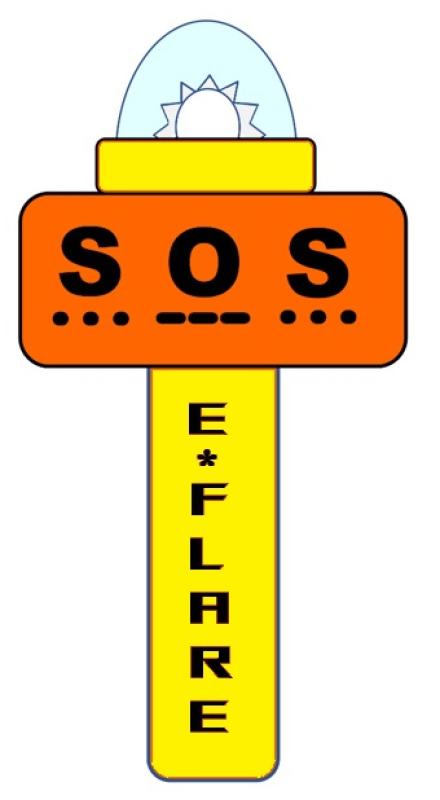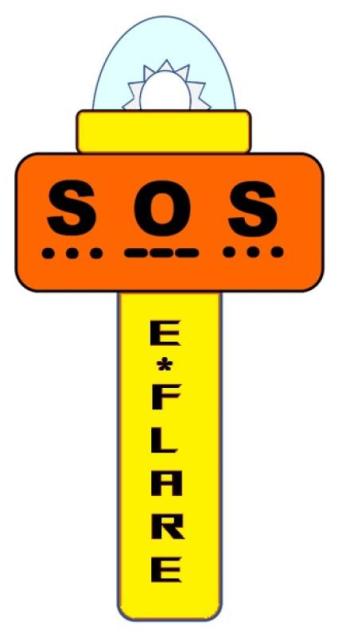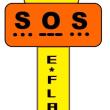‘Hey, what’s that blinking light out there?’
Boaters and shore-side residents along the New England coast have been reporting distress flare sightings for generations. Everyone takes a distress flare sighting seriously even when sometimes what they’re seeing may just be regular fireworks in the distance. Many long nights have been spent by Coast Guard crews tracking down a “flare sighting” from a nonexistent vessel in distress.
Day/Night Visual Distress Signals (VDS) are mandatory equipment on commercial vessels and recreational power vessels over 16 feet that ply federally controlled coastal waters, but as technology has changed, so have distress signaling options for recreational boaters.
Approved “in theory” in 1979, it wasn’t until 2018 that LED technology had advanced to meet the VDS specifications for recreational vessels (10-mile visibility is one) and the use of an automatic SOS light, known as an “E-Flare,” as a nighttime alternative to pyrotechnic flares, became an option. Pyrotechnic flares have some significant drawbacks: they don’t like getting wet, most expire every 42 months, and if not properly utilized, can pose a fire hazard and a source of significant vessel damage or personal injury if mishandled. The often-unheeded advice is to always hold handheld flares over the leeward side of the boat to avoid the red-hot drippings from the flares landing inside the boat. A good safety plan, but if the shore, or the vessel you’re trying to signal is on the windward side, it can be a difficult situation.
Aerial flares avoid the onboard fire concerns but still expire regularly, must be kept dry, and if mishandled may still pose a significant risk of fire or injury. Recent changes in expired pyrotechnic flare disposal regulations have further complicated the use of pyrotechnic VDS options.
To boaters or shoreline observers unfamiliar with an E-Flare’s SOS distress signal, a casual glance might not make it clear “that blinking light out there” is actually an automatic distress signal and not just a vessel whose running lights may have faulty wiring, or someone playing around with a flashlight. If in doubt, counting the 3 short/3 long/3 short flashes, the familiar Dot Dot Dot/Dash Dash Dash/Dot Dot Dot repeated in sequence, should confirm the distress nature of the intentional Morse Code SOS signal. It’s also important to note that just having a flashlight with which you can manually flash the SOS signal doesn’t count as a nighttime rated VDS.
As mentioned, E-Flares are nighttime only distress signals, and not all brands of E-Flares are visible to night-vision scanning equipment since they produce no heat signature. Coast Guard SAR (Search and Rescue) mission pilots and personnel have reportedly adjusted their scanning techniques to check with and without use of IR (infrared) night vision equipment for that very reason.
Since E-Flares count only as nighttime distress signals, other means of daytime distress signaling: an orange/black SOS flag (often included by the E-Flare manufacturer), orange smoke flares (Day only), or most handheld and aerial or pyrotechnic flares (Day/Night) would still be required. And like any safety-related battery operated device, battery replacement and replacement tracking is an important chore. Even if you never use your E-Flare, installing new batteries at the start of every season is the best plan.
So while not the perfect replacement for all required distress-signaling equipment, E-Flares can provide a hazard-free alternative to pyrotechnic flares and be augmented for daytime use with an orange smoke VDS or an SOS flag. Plus, an E-Flare can be hoisted up the mast on a sailboat or taped/bungeed to a boat hook or VHF antenna for greater visual sighting range. E-Flares are waterproof and float so they can safely go with you if you have to abandon the vessel into a life raft or dinghy, or the vessel sinks and abandons you, with entering the water the result.
There are numerous models of E-Flares available; some may be better suited to your boating requirements than others, so shop around and select the model that best meets your needs. Storage requirements and deployment/hoisting options should be considered. E-Flare sizes are generally 6 to 8 inches high, and 3 to 6 or so inches wide. Prices range from around $80 to near $300 depending on features and visual brightness output. The amber $20-$30 “DOT Approved” flashing lights, also called “E-Flares,” used for roadside emergencies are NOT approved marine Visual Distress Signals, so shopping online can be confusing.
And please consider that meeting only the minimum requirements for your onboard safety equipment and distress signals is never the best plan and probably not the plan your passengers or family would endorse. If ordering a new car had an “I want the cheapest, barely-passed-the-tests, seat belts you’ve got” option, few would check that box.
No one wants to experience an emergency while on the water, at least being better prepared to summon assistance may help make that experience shorter and safer.




































